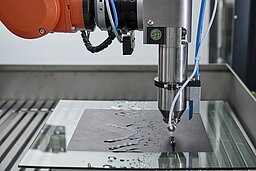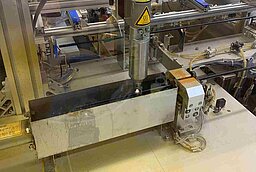Bonding Processes with Plasma: Efficient and Sustainable

Download the full article here in English
Download the full article here in German
In modern industrial manufacturing, adhesive bonding processes are becoming increasingly important as a flexible and material-friendly alternative to conventional joining methods. However, these processes often face a conflict between efficiency and environmental compatibility. Plasmatreat GmbH addresses this issue by offering innovative applications based on atmospheric pressure plasma. These applications provide modern alternatives to surface treatment, significantly improving the results of adhesive bonds while making processes more environmentally friendly and sustainable.
Cleanliness, chemical compatibility, and high surface energy are crucial for functional and efficient bonding processes in industrial environments — and this is precisely where Plasmatreat GmbH's innovative solutions come in. The global market leader in atmospheric pressure plasma systems and equipment has developed pioneering Openair-Plasma, HydroPlasma, and PlasmaPlus processes that can micro-clean, activate, and coat surfaces, including plastics, metals, and glass. This change in surface properties using plasma significantly improves adhesive bonds.
Sustainability Meets Efficiency
Using plasma technology for surface pretreatment ensures improved, particularly durable bonds and makes a decisive contribution to greater sustainability in industrial bonding processes.
- No need for chemical bonding agents: Thanks to surface activation by Openair-Plasma, environmentally friendly, solvent-free adhesives can be used for bonding. Environmentally harmful primers are no longer necessary as bonding agents, which also means that fewer VOC emissions are produced in the bonding processes.
- Material diversity and resource conservation: Surface pretreatment with Openair-Plasma enables bonding between difficult-to-bond or incompatible materials. In the plastics sector, for example, this results in the good adhesion of nonpolar, low-cost, or recycled materials that can replace expensive engineering plastics.
- Energy savings and CO2 reduction: Plasmatreat's innovative plasma systems generally only require compressed air and electricity to operate. If the electricity is sourced from renewable sources, the processes are CO2-neutral.
- Optimization through inline capability: Plasma systems can be seamlessly integrated into existing production lines to increase efficiency. The dry process allows for immediate further processing. This reduces downtime and storage requirements.

Successful Applications in a Wide Range of Industries
Companies around the world in a variety of industries rely on plasma technology to make their bonding processes more sustainable and efficient. Examples from Plasmatreat's customer portfolio include long-term stable glass-stainless steel connections for street lamp manufacturing and special applications such as producing traditional Japanese Kyudo arrows for archery, where feathers must be reliably bonded to an aluminum shaft. "Our various applications with atmospheric pressure plasma reduce energy consumption and CO2 emissions. They also enable sustainable material combinations and increase the quality of adhesive bonds. This combination of efficiency and environmental friendliness establishes plasma technology as a pivotal component in the future of industrial bonding," explains Klaus Kresser, Market Segment Manager of Bonding Applications at Plasmatreat GmbH.

